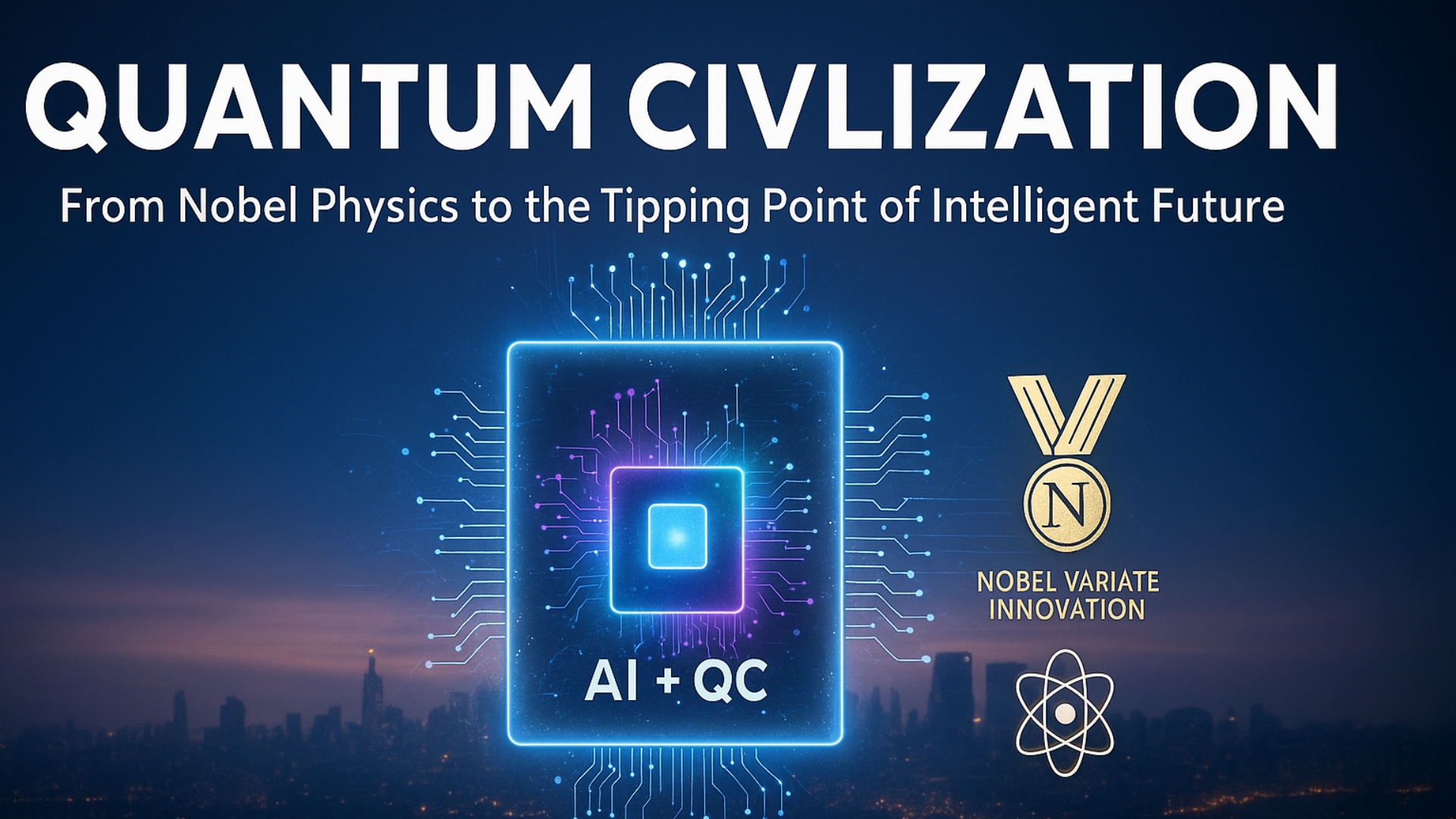Quantum Civilization: From Nobel Physics to the Tipping Point of Intelligent Future
I. Introduction: The Quantum Inflection Point — A Long-Term Consensus Between Capital and Science
Quantum mechanics is no longer an academic pursuit in the lab; it is a trillion-dollar variable actively reshaping industrial landscapes.
According to McKinsey’s Quantum Technology Monitor 2024, the global quantum technology (QT) ecosystem has attracted $42 billion in public investment. Private investment fell 27% in 2023 to $1.71 billion — but that’s far smaller than the 38% global average decline in startup funding. In other words, long-term capital confidence in quantum remains intact.
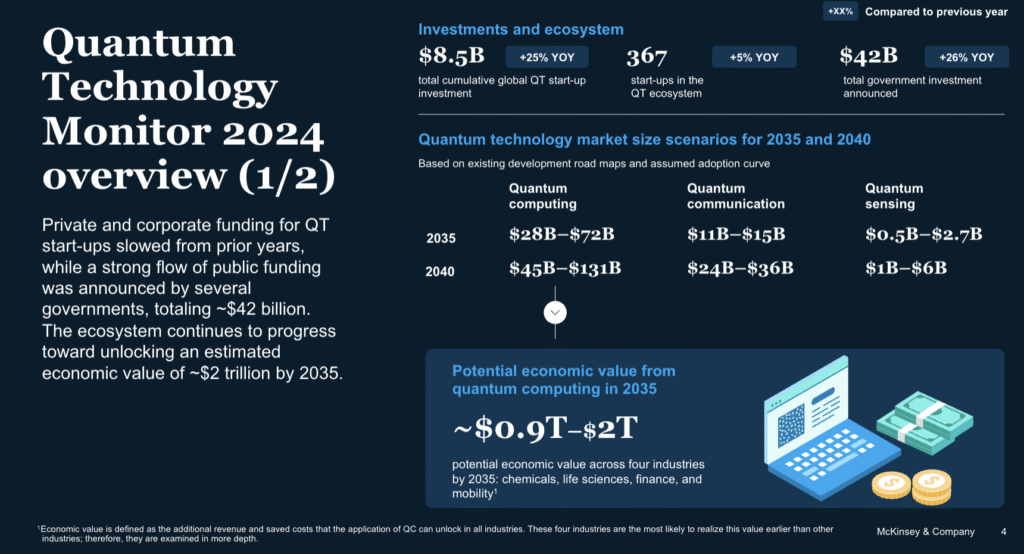
McKinsey estimates that by 2035, quantum technologies could unlock $2 trillion in economic value, with life sciences, finance, chemicals, and transportation as early beneficiaries. By 2040, the combined market size of Quantum Computing, Communication, and Sensing is expected to hit $173 billion.
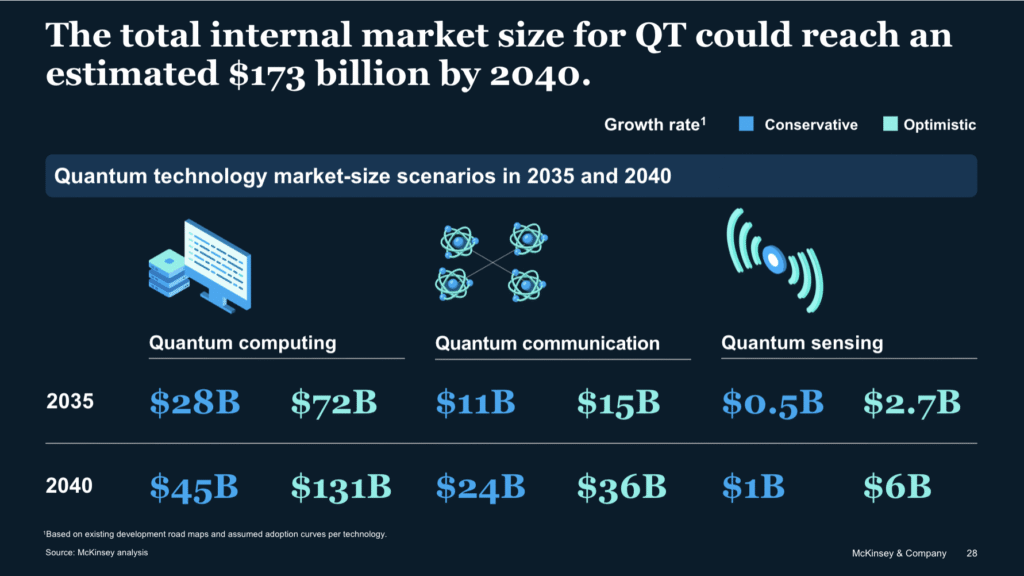
The 2025 Nobel Prize in Physics has effectively pressed the “accelerator” on this global transformation.
II. The Nobel Prize Decoded: The “Tunnelling Signal” for Industrial Scale
The 2025 Nobel Prize in Physics honoured three pioneers — John Clarke, Michel Devoret, and John Martinis — for their foundational work in “Macroscopic Quantum Effects.”
Their work, at its core, involved creating a 1-centimetre-sized “Josephson Junction” using superconductors and insulators. They proved that billions of electron pairs could act as a single, giant particle, performing a seemingly impossible “collective tunnelling” (or “quantum wall-piercing”) — a quantum effect observed at a visible, macroscopic scale.
This discovery laid the foundation for today’s superconducting quantum computers, bridging the gap between theoretical physics and scalable hardware.

Notably, Martinis later led Google’s quantum team, achieving “quantum supremacy” in 2019, marking a historic moment where quantum systems outperformed classical computers on specific tasks.
The core message behind the honour is significant:
- Removing Conceptual Barriers to Scalability: Demonstrating that large systems can show stable quantum behaviour provides the necessary theoretical and experimental basis for developing larger, more complex fault-tolerant quantum computers.
- Strong Alignment with Investment Priorities: The Nobel recognition confirms the industry’s shift towards fault-tolerant quantum computing (FTQC). McKinsey reports that in 2023–2024, IBM, Microsoft, and IonQ have made key advances in “quantum error correction.” For instance, IBM utilized 288 physical qubits to preserve 12 logical qubits, resulting in a 90% reduction in error rate compared to traditional methods.
III. Case: IonQ AQ64 — The Commercial Quantum Computer You Can Access in the Cloud
In my book Strategic Development of Technology in China, I introduced IonQ, the world’s first publicly listed pure-play quantum computing company.
IonQ follows the trapped-ion approach — using electromagnetic fields to capture charged atoms and encode data in their internal vibrations. This design achieves an operational error rate below 0.1%, the most precise among all mainstream quantum computing architectures.
- Hardware Leap and Commercial Scale: Its fifth-generation system, “Tempo,” launched in 2025, achieved a milestone of 64 Algorithmic Qubits (AQ). This means the system can simultaneously explore over 18 quintillion computational possibilities — a 268 million-fold increase in processing power over last year’s AQ36, significantly outperforming comparable published IBM systems.
- Application and Ecosystem: Tempo has already demonstrated real-world impact across industries:
- Energy & materials: simulating lithium-ion battery reactions with Hyundai;
- Drug discovery: accelerating molecule screening with AstraZeneca;
- Finance & optimization: modelling complex portfolios with Multiverse Computing.
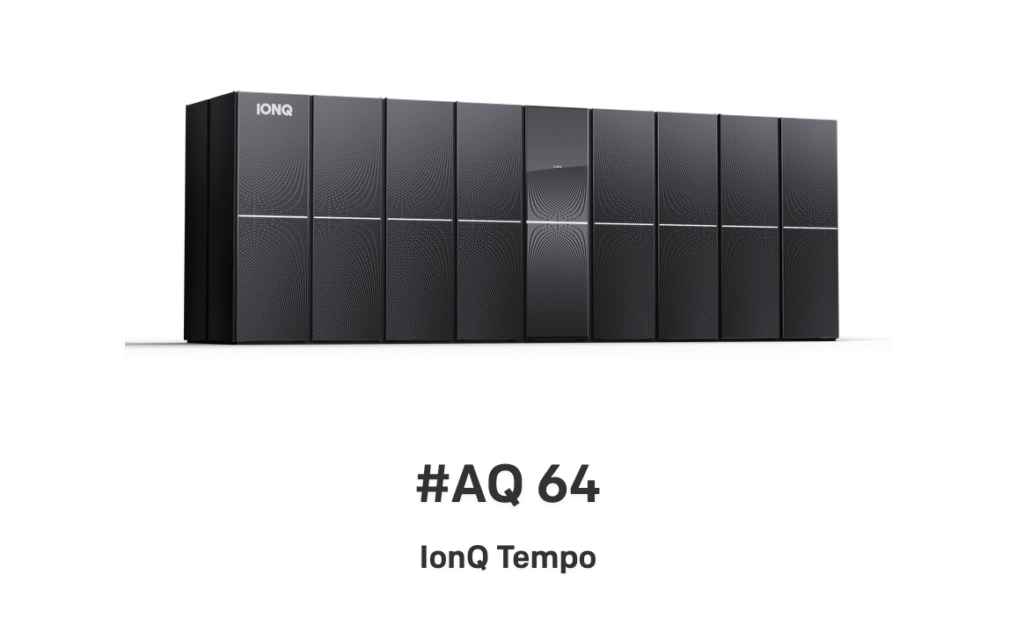
Crucially, IonQ is the only quantum system simultaneously available on Amazon Braket, Microsoft Azure, and Google Cloud, dramatically lowering the entry barrier for enterprises and accelerating commercial adoption.
IonQ is not building prototypes — it’s engineering the backbone of the post-classical computing era.
IV. Closing: Why Investors Should Care Now
Quantum is no longer a far-future bet.
It’s entering the engineering and early commercial phase, where hardware performance translates directly into enterprise applications.
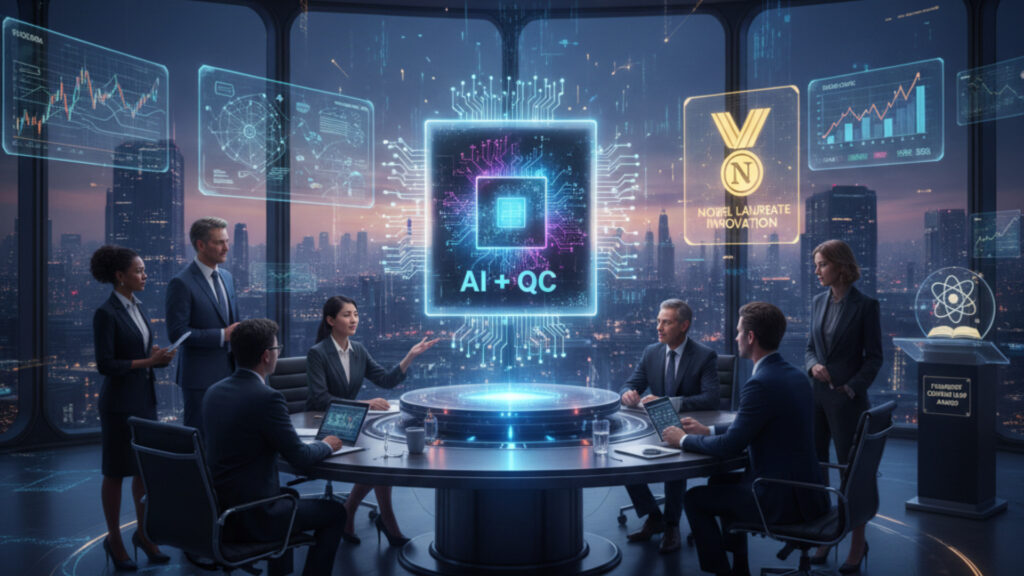
For founders, this means a new layer of computational advantage; for investors, it’s a once-in-a-generation inflection point similar to the semiconductor industry in the 1970s.
The Nobel Prize told us quantum coherence is real. IonQ proved it can be built, scaled, and rented by the hour.

